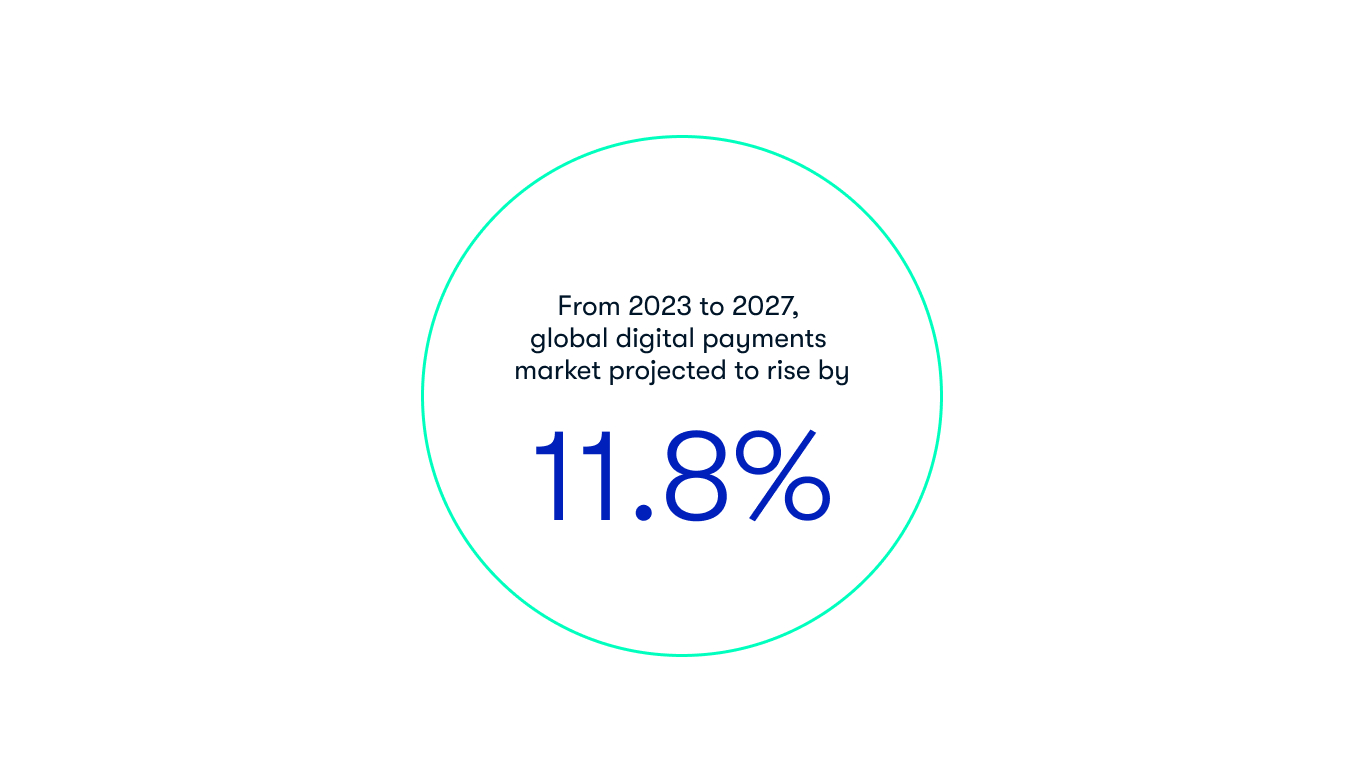One of the biggest challenges in the world of payments has always been integrating all the numerous and ever expanding stakeholders within the ecosystem.
Payments have always been highly fragmented and complex, and only now are emerging standards being gradually adopted. In particular, the likes of Open Banking (OB) & ISO 20022 are attempts to harmonise and ease this long standing pain point.
Interoperability and agility will be paramount moving forward in the global payments landscape. This blog explores the fast pace of change within digital payments, and the opportunities that exist for you to take advantage of.
The digital payments revolution
Global digital payments are set to grow exponentially in the coming years. Research has found that the worldwide market volume is projected to increase by 11.8% between 2023 and 2027, to a total of $14.78 trillion. From this will come many opportunities to provide skilled technology services to support this growth across the whole sector.

Globally, there has been an explosion in digital transactions, which was greatly accelerated due to COVID, eCommerce and Contactless. As a result, there now appears to be a huge growing momentum and there is no sign of it slowing down. There are several other factors also at play here, including:
 Open Banking:
Open Banking:
These initiatives and the plethora of new Third Party Providers (TPP) are further adding fuel to the digital revolution, as we move ever closer to Open Finance and perhaps one day true Open Data
 Alternative Payment Methods:
Alternative Payment Methods:
More and more APMs are gaining traction, as traditional methods often lack the fast, frictionless processes that eCommerce merchants and customers demand
 Verification and Anti-Fraud:
Verification and Anti-Fraud:
Cross-border payments, interoperability, rigorous Know Your Customer (KYC) and Anti-Money Laundering (AML) verification processes will further add to the growth of digital data and transactions, along with greater anti-fraud screening.
The opportunities to fulfil this demand
All of the changes listed above mean that the digital payments landscape is full of opportunities for new solutions and innovations that can serve key business and customer needs. However, for this to happen, much of the underlying technology that supports payments around the world needs to be updated.
In particular, in order to cater for this digital revolution, core payment rails and interbank networks will have to be overhauled to support this growing demand; indeed some are being designed and built from scratch as a better option compared to existing infrastructure. This will support a range of big changes coming down the line, including:
- The Bank of England’s Real Time Gross Settlement (RTGS) renewal programme, and its upcoming New Payments Architecture (NPA)
- The potential of new Central Bank Digital Currencies (CBDCs), currently under official consultation in the UK and being evaluated in many other countries around the world, including the European Central Bank
- Further moves towards payment and currency digitisation, including the European Payments Initiative (EPI), and India’s Unified Payments Interface (UPI)
- The long-awaited introduction of instant bank account transfers in the United States, thanks to the Federal Reserve’s FedNow project
- Greater adoption of ISO 20022 financial message specification, enabling faster and simpler cross-border payments, and with more detailed information sharing
- The modernisation of the SWIFT interbank network, including its transition towards ISO 20022 specification
- The use of APIs to expose and consume digital information for the benefit of Consumers, also empowering data-driven decision making globally
In summary
As this blog ably demonstrates, there is plenty of change afoot in the world of payments, reflecting the increasing digitisation not only of the business world, but of the everyday lives of the public. Increasingly, businesses and customers alike will want payment platforms that are easy to use, lightning-fast, available all over the world, and suitable for a wide range of both traditional and digital currencies.
It’s the enterprises who can provide these solutions, or who can embed these technologies into their own online footprint, that will be best-placed for success. But to get there, it’s vital to work with a Product Engineering partner who can provide all the development support and advice you need - and that’s where Ciklum comes in.
With our deep expertise across cloud, cybersecurity, data analytics, intelligent automation, AI and much more, we can help you develop the payments platforms that your customers and clients are crying out for. Get in touch with us today to discuss your specifics.
Blogs



































